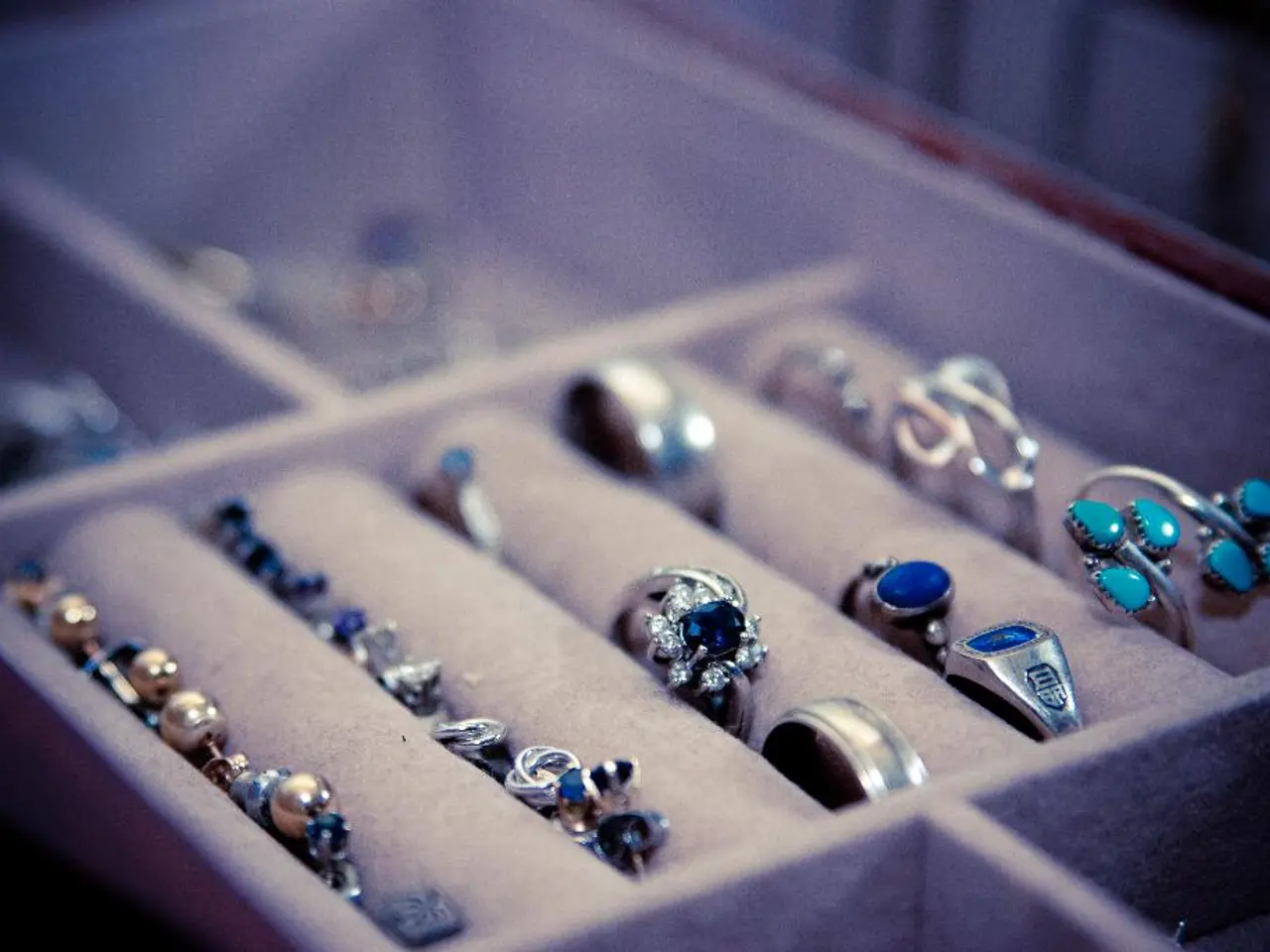Investigation into the Use of Amethyst in Vintage Jewelry
In the world of jewellery, few stones carry as much historical and cultural significance as amethyst. This transparent variety of crystalline quartz, known for its distinctive purple hue, has been treasured across civilizations and eras, serving as a marker of wealth, spirituality, and protection.
In medieval Europe, amethyst was more than just a vibrant adornment. It was a symbol of purity and faith, believed to protect the wearer against harm, including poisoning and betrayal. Pieces, often set in precious metals like silver coated with gold, were badges of political loyalty and spiritual safeguarding, indicators of high social status and aristocratic identity. A 600-year-old silver-gilt amethyst jewel found in a Polish castle moat exemplifies these attributes, linking the gem's use to medieval nobility.
Ancient Egyptians also held amethyst in high regard, using it extensively since predynastic times, particularly during the Middle Kingdom when mining was notable. Known as hesmen, it was often carved into scarabs or beads, sometimes plated with gold. Beyond ornamental use, it was believed to have protective qualities—easing fears and guilt, guarding travelers, and providing spiritual safeguarding.
The gemstone’s name, from the Greek amethystos meaning “not intoxicated,” reflects an ancient belief in its power to prevent drunkenness and maintain clarity. This protective symbolism continued through time, making amethyst a stone not just of status but also of dignity and moderation.
By the 16th century, amethyst was considered the ideal antidote for curing drunkenness and nightmares. Fast forward to the 1960s and 1970s, designer-jewellers in London such as Andrew Grima and John Donald produced striking and original creations using amethyst in abstract and unusual gold settings.
Throughout the 19th century, amethyst continued to be a popular choice for jewellery. Members of the aristocracy favored the rich opulence of amethyst's color, while less valuable specimens were used for simpler pieces. The discovery of large amethyst deposits in Brazil in the early 19th century increased the availability of the gemstone, making it more affordable for a wider audience.
Amethyst also has a close association with the Church. It was adopted by the Church and is most closely associated with massive gold rings worn by Popes and Bishops.
Despite changes in fashion and trends, amethyst has never declined in popularity. Its color, availability, and historical associations make it an attractive choice for jewellery lovers today. Whether used in traditional settings or modern designs, amethyst continues to symbolize wealth, spirituality, and protection, reminding us of its rich history and enduring charm.
[1] John C Benjamin FGA DGA FIRV, "Starting To Collect Antique Jewellery." [2] "Ancient Egyptian Jewelry." Metropolitan Museum of Art. https://www.metmuseum.org/toah/hd/ajej/hd_ajej.htm [3] "Amethyst." British Gemstones. https://britishgemstones.co.uk/amethyst/ [4] "Amethyst." GemSelect. https://www.gemselect.com/gemstones/amethyst.html
- In addition to traditional jewellery, amethyst is also incorporated into various courses and publications related to gemmology, education, and self-development, offering insights into its history and properties.
- Beyond the fashion-and-beauty sector, amethyst is used in the home-and-garden industry as an aesthetically pleasing decor element, showcasing its versatility.
- The lens of a camera can capture the beauty of amethyst in photographs, making it a popular subject for lifestyle magazines, particularly those focusing on travel, cars, and luxury living.
- In certain events and gatherings, amethyst jewelry might be auctioned off at charity functions or glamorous galas, raising funds for various causes while promoting the stone's allure.
- Relationship advice columns and blogs occasionally discuss the significance of giving amethyst as a gift, as it represents protection, stability, and unwavering commitment between two individuals.
- Pets, particularly the exotic variety, are often seen adorned with amethyst collars and accessories, showcasing their owners' love for both fashion and gemstones.
- For those seeking entertainment beyond the traditional, casino-and-gambling venues sometimes offer amethyst-themed slot machines and games, adding a touch of elegance and mystique to the gaming experience.
- Sports figures and celebrities are sometimes seen sporting amethyst jewellery on the red carpet or during high-profile events, helping to maintain the stone's popularity in the public eye.
- When the weather outside is gloomy, the rich purple hue of amethyst can serve as a reminder of brighter days ahead, offering solace and comfort to the wearer.
- Shopping malls and high-end jewellery stores often display stunning amethyst pieces amidst a sea of diamonds, gold, and other precious stones, enticing customers from all walks of life to indulge in a bit of fashion-and-beauty self-pampering.




